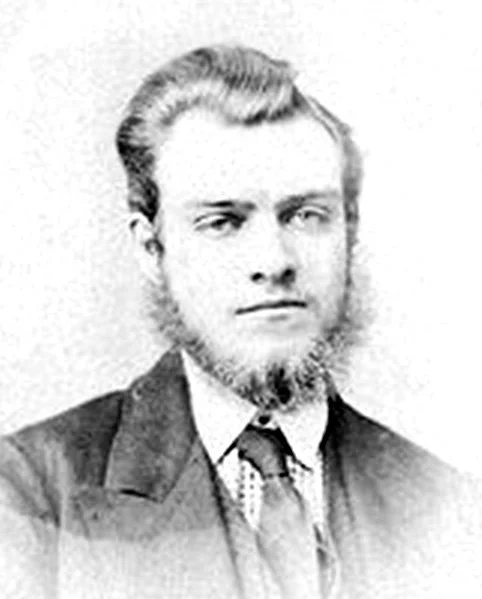Sydney B. J. Skertchly
Sydney Barber Josiah Skertchly was an English-born geologist, science writer and polymath who spent his later career in Queensland. He was one of the first writers to describe the geological formation of opal in Australia in accessible terms, and one of earliest writers to rank the quality of Queensland opal above its European counterparts. While Skertchly’s book The Story of the Noble Opal (1908) does not mention Lightning Ridge specifically, his book is one of the earliest published mentions of black opal from New South Wales.
“As the Black Swan was to the ancients among bird wonders, so was the Black Opal—something to be dreamed of, something possible but hardly probable—and Australia has given us both.”
Born in Leicestershire on 14 December 1850, Skertchly was educated at the Royal School of Mines, where he studied under prominent geologists including Ralph Tate, A. C. Ramsay and T. H. Huxley. He was later employed by the Geological Survey of Great Britain, where he mapped East Anglia and identified the Brandon Beds. His work on flint knapping and prehistoric artefacts contributed to debates on the antiquity of human occupation in Britain.
Skertchly travelled widely, working in Egypt, California, Borneo, and Hong Kong. He settled in Brisbane in 1891, taking up a post as assistant government geologist in the Queensland Geological Survey. He published reports on the Herberton and Stanthorpe districts and served as President of the Royal Society of Queensland in 1898. He was also the founding president of the Queensland Field Naturalists’ Club.
In The Story of the Noble Opal (1908), Skertchly offered one of the clearest early explanations of how Australian opal forms. He described opal as post-dating the marine Cretaceous rocks in which it is found, filling cavities left by dissolved minerals or fossil material, a key part of our understanding of opal formation.
He also drew attention to black opal from New South Wales, noting that cracks in non-opal-bearing boulders in old beach deposits had been filled with opal. Skertchly argued that Australian opal, especially that of Queensland, surpassed the Hungarian opal in both form and brilliance:
“...to-day, wherever Opals are held in esteem, and that is wherever civilised or barbaric man delights in splendid jewels, our Queensland Noble Opal takes precedence of all others.”
Skertchly wrote prolifically for the Brisbane Courier, lectured, and was a scientific educator and professional advocate. Though not an optometrist, he helped establish the Queensland Institute of Ophthalmic Opticians and was integral to the passage of the Queensland Opticians Act (1917).
He retired to the Nerang district in 1917 and died in 1926. He is buried on the Gold Coast. A granite monument was placed over his grave by the scientific societies he had supported.
Article: Research by Russell Gawthorpe and Leisa Carney, edited by Russell Gawthorpe. Sources:
‘Sydney Barber Josiah Skertchly’, Australian Dictionary of Biography, vol. 11, 1988; Encyclopedia of Australian Science and Innovation, www.eoas.info/biogs/P000782b.htm; The Story of the Noble Opal, Sydney B. J. Skertchly, 1908.

